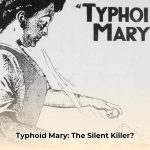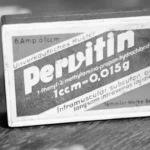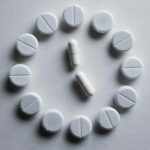Imagine discovering something life-changing completely by accident. That’s precisely what happened with penicillin. This isn’t just about a moldy petri dish; it’s about the brilliant minds who deciphered how to transform that mold into a life-saving drug, the obstacles they overcame, and the international teamwork needed to make it widely available. The importance of hygiene in preventing infections was also a crucial discovery, as highlighted by handwashing pioneer. Let’s explore the journey from the initial “eureka!” moment to the ongoing battle against antibiotic resistance and the innovative strategies shaping the future of antibiotic development.
The Discovery of Penicillin: Alexander Fleming’s Accidental Breakthrough
Picture a cluttered lab, overflowing with petri dishes, and a scientist, Alexander Fleming, likely just eager to call it a day. Our story begins there, in 1928 – a year that would forever alter medicine. Fleming, a Scottish bacteriologist at St. Mary’s Hospital in London, was studying Staphylococcus bacteria—germs known to cause various infections, from minor skin irritations to life-threatening conditions like sepsis. Upon returning from a vacation, Fleming noticed something peculiar on a discarded petri dish: a mold had inadvertently grown, contaminating the culture. Strangely, the bacteria surrounding it were dying. It was an unintentional finding, a complete stroke of luck, but one that would revolutionize healthcare.
It wasn’t just any mold, though. Fleming identified it as Penicillium notatum (now known as Penicillium chrysogenum), a common fungus. He quickly realized the mold was producing a substance that was killing the bacteria. He named this substance penicillin, and initial experiments revealed its potent antibacterial effects against a wide range of pathogens, including streptococcus, meningococcus, and diphtheria bacillus. Fleming published his findings, sharing this exciting discovery with the scientific community in 1929 in the British Journal of Experimental Pathology. However, extracting sufficient penicillin for real-world applications posed a significant challenge. Imagine trying to squeeze a single drop of juice from a thousand tiny lemons – that’s how inefficient the initial penicillin extraction process was. For more than a decade, penicillin remained a fascinating scientific curiosity, rather than a life-saving drug. How could something so promising remain out of reach for so long?
The Oxford Team and the Race to Mass Production
The true breakthrough emerged years later, during World War II. Amid the war’s horrors came an urgent need to find treatments for infections that were often fatal. Howard Florey, Ernst Chain, and Norman Heatley at Oxford University took on the challenge of turning Fleming’s discovery into a usable medicine. Their team prioritized purifying and producing penicillin on a larger scale. They successfully conducted the first clinical trials in 1941, demonstrating that penicillin could effectively treat bacterial infections in humans, starting with a policeman named Albert Alexander suffering from a severe infection. Although Alexander initially showed remarkable recovery, supplies ran out, and he tragically died. Despite this setback, further trials proved penicillin’s efficacy.
Their work was groundbreaking, but it wasn’t enough. They needed to devise a method to produce penicillin in quantities large enough to treat the thousands of soldiers suffering from infections. Wartime conditions made industrial production in Britain difficult.
The solution led them to the United States, specifically to the US Department of Agriculture’s Northern Regional Research Laboratory (NRRL) in Peoria, Illinois. With support from the Rockefeller Foundation, Florey and Heatley traveled to the US in 1941 to seek help with large-scale production. The scientists confronted an enormous challenge: mass production. Imagine scaling up production from a few drops to enough to treat countless soldiers and civilians. They needed to discover ways to grow significantly more penicillin, developing methods to cultivate the Penicillium mold and obtain huge quantities of the life-saving substance. Under the direction of Robert Coghill, the NRRL team, including Andrew Moyer, ingeniously utilized “submerged fermentation” (growing molds in large, liquid tanks), a clever technique that dramatically increased penicillin yield compared to the surface-culture methods used in Oxford. Unexpectedly, they discovered that adding corn steep liquor, a byproduct of corn wet-milling, to the mixture acted as a fantastic nutrient, allowing the mold to thrive and produce even more penicillin. Further improvements included the addition of penicillin precursors like phenylacetic acid. Another key development was finding a more productive strain of Penicillium, ironically discovered on a moldy cantaloupe from a local market. It was a major scientific achievement, a collaborative effort fueled by the urgency of war, showing the power of applied microbiology.
The Impact of Penicillin and the Rise of Antibiotic Resistance
The massive increase in penicillin production during World War II proved to be a turning point. It saved countless lives, drastically reducing death rates from bacterial infections that were once considered death sentences. The US Army estimated it was giving two million doses per month by 1945. It represented a revolutionary moment in medicine, transforming how infections were approached and treated. In 1945, Fleming, Florey, and Chain were jointly awarded the Nobel Prize in Physiology or Medicine for their groundbreaking work.
However, like any powerful tool, penicillin had its downsides. The widespread use of penicillin led to an unfortunate consequence: antibiotic-resistant bacteria. These “superbugs,” capable of resisting the effects of penicillin, emerged as a new threat. This underscores the importance of responsible antibiotic use and the constant need for research into novel drugs to combat resistant bacteria. Fleming’s accidental discovery taught a valuable lesson: even fortunate accidents require responsible usage and consistent innovation, making antibiotic stewardship a must.
As overuse grew, health organizations worldwide began advocating for reduced antibiotic usage, especially for non-serious conditions, to combat the rise of superbugs.
The story of penicillin doesn’t end here. It’s a story of relentless curiosity, accidental discoveries, and monumental collaborative efforts. Its legacy extends far beyond its immediate impact, reminding us that groundbreaking work can arise from unlikely places, and that even simple mistakes can lead to monumental achievements. The discovery demonstrated that scientific collaborations, sparked by either serendipitous findings or targeted research, can lead to transformative advancements in medicine. The journey of penicillin continues, driving an ongoing search for new solutions to combat the evolving threats of infectious diseases—a race against resistance that never truly ends. Can we continue to innovate at the pace required to stay ahead of evolving bacteria? The fight to discover new antibiotics remains, driven by that one fortunate accident in a cluttered lab, highlighting the importance of research and development.
Optimizing Penicillin Production: From Surface Culture to Submerged Fermentation
The accidental discovery of penicillin, a fortunate moment in scientific history, sparked a medical revolution. But the transition from a moldy petri dish to mass production was anything but accidental. It involved a complex and evolving understanding of fermentation processes (using microorganisms to produce substances). Let’s explore how scientists improved penicillin production, boosting yields of this valuable medicine.
Early Days: Stationary Mat Culture
Initially, penicillin production was, well, primitive. Think shallow dishes, similar to growing mold on bread. These “stationary mat culture” methods were crude, yielding only tiny amounts of the life-saving drug. Penicillium was grown on the surface of a liquid nutrient medium in flasks or trays. It was a race against time during World War II; every drop counted. But such low-yield methods couldn’t meet the rising demand. How could production be scaled up to meet wartime needs?
The Deep Dive: Submerged Fermentation
The real progress came with submerged fermentation. Imagine transitioning from a shallow puddle to a deep, well-aerated lake. Deep tanks, equipped with ingenious aeration systems, allowed for large-scale penicillin cultivation. In submerged fermentation, the mold grows in large tanks in a constantly agitated and aerated mixture. These improvements significantly increased the amount of penicillin produced. This was a pivotal step in making penicillin widely available, requiring considerable process optimization. But how do we compare these drastically different approaches and assess relative yields?
Optimizing the Process: A Scientific Approach
The key to boosting yields lies in understanding and controlling the fermentation environment. Several factors interact to influence penicillin production. Consider it a complex recipe, where each ingredient and preparation method are important. Parameters like temperature, pH, nutrient levels (carbon and nitrogen sources), and oxygen supply all impact the final yield. How to compare penicillin production yields across different fermentation methods hinges on careful, controlled experimentation and measurement.
The Role of Key Nutrients and Factors
Scientists discovered the importance of specific nutrients and environmental factors. For example, lactose was found to be a superior carbon source compared to sucrose. Corn steep liquor, a byproduct of corn processing, proved to be a highly effective nutrient supplement. The concentration of sulfate ions, pH levels, the addition of precursors, and the supply of oxygen also play critical roles.
Precursors: Directing the Production
Penicillin isn’t just a single compound; it comes in different types, each with slightly different structures and properties (e.g., penicillin G, penicillin V). Scientists learned to manipulate the fermentation process by adding precursors (specific molecules that guide production toward the desired penicillin type). For example, adding phenylacetic acid leads to the production of penicillin G. This level of control further optimizes yields and enables the targeted production of specific penicillins, improving efficiency.
Strain Improvement: Finding the Best Penicillium
Another critical area of improvement was strain selection. The initial Penicillium notatum strain used by Fleming was not particularly productive. A global search for better strains led to the discovery of a more productive strain from a moldy cantaloupe. This strain was then further improved through mutagenesis using X-rays and ultraviolet radiation.
Comparing Yields: A Multifaceted Approach
So, how to compare penicillin production yields across different fermentation methods? It’s not a straightforward answer. Factors like fermentation duration, starting material, nutrient composition, aeration rates, temperature, pH, and strain characteristics must be standardized and carefully controlled. Raw data on penicillin concentration is then collected and analyzed. Statistical analysis helps determine if differences between methods are statistically significant or just random variations. What statistical methods are most effective for such comparisons?
Challenges Remain
Despite significant progress, challenges remain. Maintaining the stability of the penicillin-producing mold during long fermentation periods is crucial. Mutations or degradation of the strain can lead to lower yields. Cost-effective scaling also remains a significant hurdle—producing enough penicillin sufficiently and affordably for global needs is an ongoing challenge. Optimizing the downstream processing (extraction and purification) of penicillin also presents ongoing engineering challenges.
- Early penicillin production methods were inefficient, using stationary cultures.
- Submerged fermentation drastically improved yields, paving the way for mass production.
- Controlling key nutrients, environmental factors, and strain selection are critical for optimizing yield.
- Adding precursors guides the synthesis of specific penicillin types, enabling tailored production.
- Comparing different fermentation methods requires careful experimental design and rigorous statistical analysis.
- Challenges remain in strain stability, cost-effective scaling, and downstream processing for global accessibility.
Penicillin Production Challenges- Solutions and Breakthroughs
Key Takeaways:
- Alexander Fleming’s accidental discovery of penicillin was a turning point, scaling up its production was difficult.
- Purification and mass production required innovative techniques and great collaborative effort.
- World War II rapidly sped up the development of penicillin production methods.
- This story showcases the important connection between scientific discovery, industrial innovation, and worldwide need
From Lab Dish to Mass Production: A Herculean Task
Imagine a moldy petri dish – a seemingly insignificant detail. Yet, this is where the story of penicillin begins. Alexander Fleming’s keen observation of Penicillium mold inhibiting bacterial growth marked the start of a monumental medical revolution. Building a scalable production process for this life-saving drug was an enormous Penicillin Production Challenges- Solutions and Breakthroughs. The initial penicillin was unstable, hard to extract in large quantities, and incredibly expensive to produce. Could these limitations be overcome to save lives on a large scale?
Scaling Up: The Wartime Push
The early 1940s brought a desperate need: World War II. The war’s devastating battlefield wounds, often infected with deadly bacteria, produced an urgent demand for penicillin. The scale of the problem magnified the Penicillin Production Challenges- Solutions and Breakthroughs. This need dramatically accelerated the quest to create a viable mass production process. Teams at Oxford and American pharmaceutical companies like Merck and Pfizer tackled the problem head-on.
Overcoming the Hurdles: Innovative Solutions
The obstacles were immense. First, extracting pure penicillin from the mold was extremely challenging. Scientists developed new techniques, including deep-tank fermentation (cultivating the mold in large vats, vastly increasing yields). Furthermore, purification presented another major obstacle. Chemists devised clever methods to isolate and purify the penicillin, creating a stable, potent medicine. Techniques like solvent extraction, alumina column chromatography, and freeze-drying were developed. However, even then, the process was complex and resource-intensive, demonstrating the remarkable innovation and effort required.
The impact was immense. Penicillin saved countless lives during the war, becoming a symbol of hope and scientific triumph. Its subsequent widespread use transformed medical practice, dramatically decreasing mortality rates from bacterial infections, solidifying its place in the history of medicine.
Lessons Learned: A Legacy of Innovation
The story of penicillin’s journey from accidental discovery to widespread use isn’t just a historical account; it’s a masterclass in surmounting challenges. The Penicillin Production Challenges- Solutions and Breakthroughs pushed the boundaries of chemical engineering and pharmaceutical production – and the lessons learned continue to shape modern antibiotic development. The collaborative spirit, the urgency born of crisis, and the relentless pursuit of innovation all played crucial roles. The development of penicillin is a clear example of how medical breakthroughs need substantial post-discovery effort to translate into real-world impact. It is part of our scientific heritage highlighting that perseverance is as important as the initial insight. What modern challenges can we learn from penicillin production?
Future-Proofing Antibiotic Development- Strategies to Combat Resistance
Key Takeaways:
- The increase in antibiotic resistance is a major risk to global public health.
- Penicillin’s accidental discovery shows the unpredictable nature of scientific breakthroughs.
- Future-Proofing Antibiotic Development calls for a multi-pronged strategy, improving drug discovery, surveillance, stewardship, and global collaboration.
- The history of penicillin’s discovery provides valuable lessons for the process of developing new antibiotics.
- Dealing with the crisis calls for scientific innovation and joint global effort.
A Moldy Surprise: The Dawn of the Antibiotic Age
Imagine a messy lab, piled high with petri dishes. That’s where Alexander Fleming, in 1928, made a discovery that would change the world. He noticed something unusual: a mold, Penicillium notatum, inhibiting the growth of Staphylococcus aureus bacteria. It was a completely accidental finding, a fortunate moment of scientific brilliance that changed the world of medicine. Fleming didn’t initially fully grasp the implications; it took years, and the work of others like Howard Florey and Ernst Chain, to fully develop penicillin and put it into use as a life-saving drug.
The Race Against Resistance: Lessons from Penicillin
Penicillin’s success story, is intertwined with its biggest challenge: antibiotic resistance. Bacteria, adaptable organisms, started to show resistance soon after penicillin’s widespread use. This shows the critical need for Future-Proofing Antibiotic Development. We must learn from the past. The initial optimism around penicillin’s effectiveness was followed by the reality of bacterial adaptation. Could this be done better with bacterial genetics?
Strategies for a Sustainable Future
The current pipeline for new antibiotics is very thin, representing a significant threat. The development of new antibiotics is expensive and the profit potential is relatively low, which is a major reason why pharmaceutical companies are facing disincentives. So how do we Future-Proof Antibiotic Development? It requires a multi-faceted approach. What are the most promising avenues for innovation?
- Innovative Drug Discovery: Investigating novel mechanisms of action, exploring alternative therapies like bacteriophages (viruses that infect and kill bacteria), antimicrobial peptides, and CRISPR-based technologies, and optimizing drug delivery systems are essential. This might involve harnessing artificial intelligence for drug discovery or refocusing on natural product-based antibiotics.
- Enhanced Surveillance: Robust monitoring of antibiotic resistance patterns is key to accurately understand emerging threats. This requires global collaboration in order to share data and coordinate responses. The World Health Organization (WHO) plays a critical role in global surveillance efforts.
- Responsible Antibiotic Stewardship: Reducing unnecessary antibiotic use in both human and animal health contexts is essential to slowing resistance. This includes promoting proper diagnosis (using rapid diagnostic tests), improving antibiotic prescribing practices, and educating the public.
- Global Collaboration: The fight against antibiotic resistance is a worldwide challenge that requires international cooperation. Sharing knowledge, resources, and best practices is essential to success. International organizations, governments, research institutions, and pharmaceutical companies must work together.
The Path Forward: Investing in a Healthier Tomorrow
The discovery of penicillin serves as a powerful reminder: while scientific breakthroughs can be accidental, addressing the challenges they create requires proactive and collaborative strategies. Future-Proofing Antibiotic Development isn’t just a scientific imperative; it’s a global health necessity. The future of medicine depends on developing new antibiotics and alternative therapies while implementing responsible stewardship programs worldwide. We must learn from the past to ensure a healthier tomorrow. How can we better incentivize research and development in this critical area? Potential solutions include government subsidies, tax incentives, and market-entry rewards for new antibiotics.














